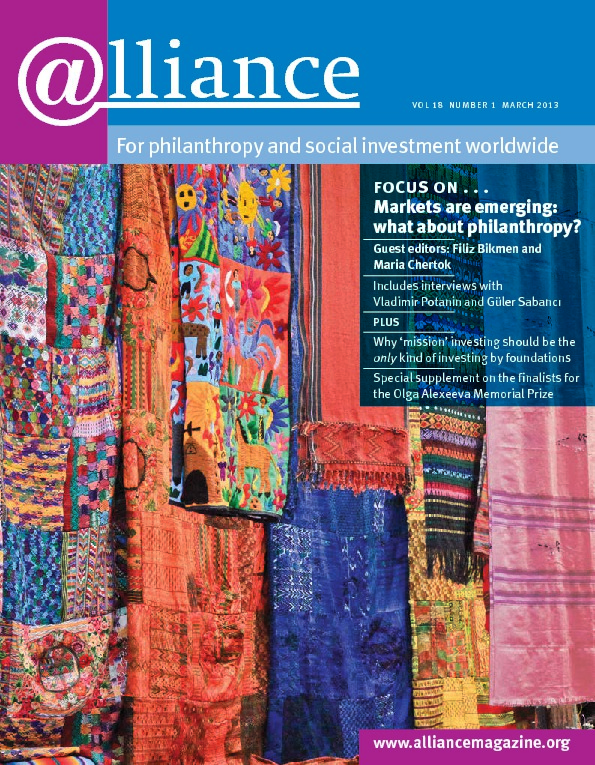The special feature on ‘Networks and philanthropy’ in the December issue of Alliance was kicked off with a lively debate in London on 10 December on the question of whether philanthropy can be both networked and strategic. Lisa Bartczak and Diane Scearce’s article contrasts a philanthropy that is highly programmed, controlled and evaluated with one that relies on emergent solutions from networks.
Applauds to Alliance for featuring network approaches (or collective impact approaches as we call them at FSG), and for highlighting their tremendous potential for social impact. However, let’s not jump the gun on strategic philanthropy. In our launch debate, we raised an important point that was alluded to in Jennie Curtis’s excellent piece linking networks to complex problems. We get enamoured with new ‘strategic’, ‘venture’ or ‘network’ models of achieving social impact. But our challenge in philanthropy is not the range of solutions (or resources and passion) at our disposal but more often our inability to connect the right solution to the problem at hand.
Our work on collective impact[1] shows that social problems are not all alike: broadly, problems can be simple, complicated or complex (‘wicked’) – as illustrations, think of providing shelter to the homeless, leading a vaccination campaign or eradicating malaria as different types of social problem. With simple problems, we have tested solutions and can replicate them. For complicated problems, we have known protocols and ways of collaborating; assuming we can line up the right expertise and activities, we have a good chance of success. But for complex problems we have no known formulas; experience is no guarantee of success, and underlying conditions constantly change.
‘Strategic’, programmed philanthropy may well suit some simple or complicated problems, but it is also being strategic to take a network or collective impact approach to tackle complex problems and it is the role of philanthropy to nurture the process and conditions that let solutions emerge from networks.
In our work on collective impact, we have seen that foundations are helping to channel the power of many against wicked problems: funding the process rather than the work; building a common understanding of the systemic nature of the problem and a common agenda (research, convening, etc) without proposing the answer; establishing shared measurement and learning systems that leverage the power of technology; identifying and strengthening the backbone organizations that are needed to power network processes and all the communication and coordination it entails.
So yes, let’s be strategic and networked when choosing network solutions.
Marc Pfitzer
Managing director, FSG Geneva
1 See John Kania and Mark Kramer, ‘How Collective Impact Addressed Complexity’, Stanford Social Innovation Review (SSIR) Online January 2013; Hanleybrown, Kania and Kramer,‘Channeling Change: Making Collective Impact Work’, SSIR, January 2012; Kania and Kramer, ‘Collective Impact’, SSIR, Winter 2011.




Comments (0)